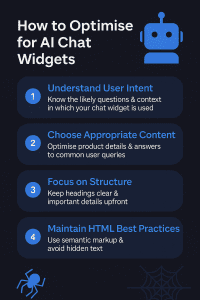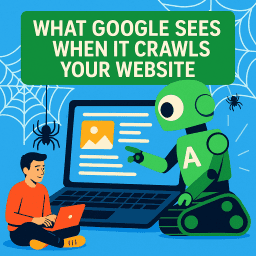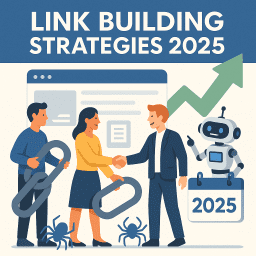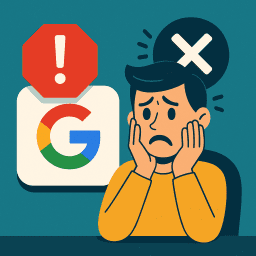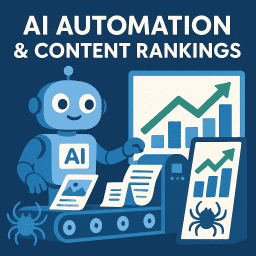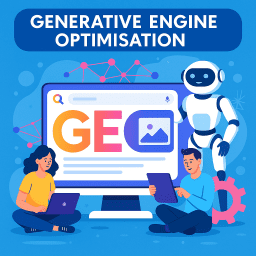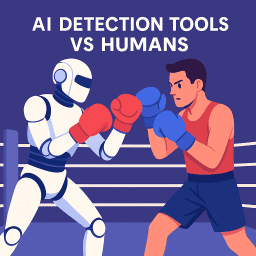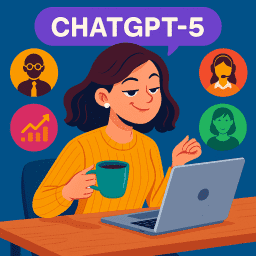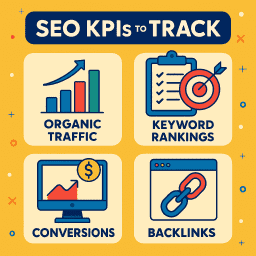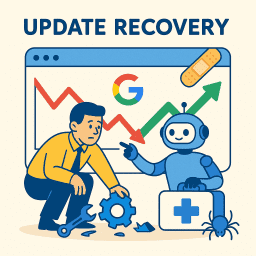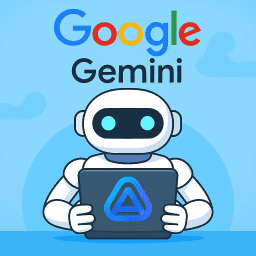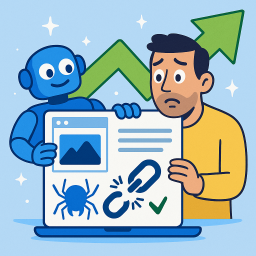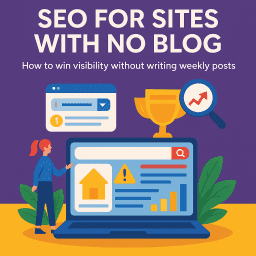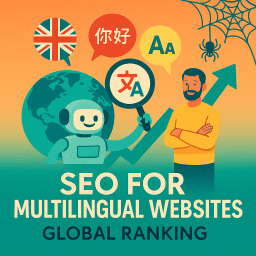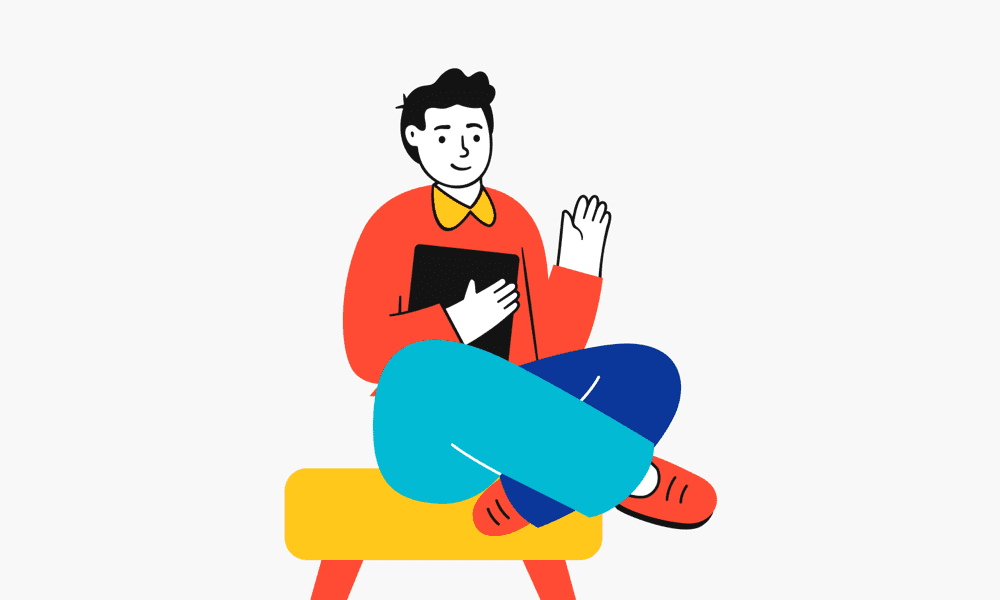SEO for AI Chat Widgets: Keep Traffic on Your Pages
Protect engagement while using AI chat tools on your site

🟡 How to Stop AI Chat Widgets From Gobbling Up Your Traffic
AI chat widgets are everywhere in 2025 — including right here, where you’ll spot one called ‘Ask David’ at the bottom of this page. From customer support bots to interactive SEO assistants, these tools are transforming how users engage with websites.
But here’s the problem: if you’re not careful, that helpful little widget could end up stealing attention from your core pages, reducing engagement, and even lowering your conversions. 😬 In this post, we’ll explore how to integrate AI chat widgets without harming your SEO or cannibalising your own traffic.
🤖 What Are AI Chat Widgets?
AI chat widgets are embedded tools that provide real-time, automated interactions on a website. They can answer user questions, guide navigation, assist with purchases, or provide SEO-related suggestions. Popular examples include custom GPT-powered bots, Zendesk AI chat, Intercom AI, and bespoke OpenAI API integrations.
They’re powerful — but they change how visitors engage with your site. Instead of clicking deeper, users might get everything they need from the widget itself. That can reduce page views, time on site, and even conversions if not handled carefully.
📉 How AI Chat Widgets Can Harm SEO and Engagement
While AI chat widgets improve user experience in many ways, they can also introduce SEO challenges:
- 📌 Reduced page exploration: Users get answers directly from the widget without visiting supporting pages.
- 📌 Lowered internal linking impact: Fewer clicks through your planned link structure.
- 📌 Conversion path disruption: Widgets may divert attention from CTAs and key landing pages.
- 📌 Potential for indexable duplicate content: Some poorly configured bots may generate crawlable outputs that overlap with core content.
⚠️ SEO Pitfalls to Watch Out For
- ❌ Widgets that answer every question without linking users to deeper pages.
- ❌ AI bots that provide off-site links (e.g. generic help articles from external sources).
- ❌ Poorly designed bots that serve duplicate content into the DOM (and get indexed).
- ❌ Widgets that slow down site performance, hurting Core Web Vitals.
✅ Best Practices for SEO-Friendly AI Chat Widgets
To ensure AI chat doesn’t eat your traffic:
- ✅ Encourage deeper engagement: Configure bots to guide users toward relevant internal pages, not just answer in isolation.
- ✅ Link to landing pages: Use the bot to funnel traffic to your most valuable pages (e.g. service, product, or contact pages).
- ✅ Control indexability: Ensure bot outputs aren’t indexable unless designed for SEO (e.g. FAQ pages generated by the bot).
- ✅ Monitor analytics: Track the impact of the chat widget on click paths, bounce rates, and conversions.
- ✅ Optimise performance: Lazy-load bots, minimise script size, and test for CLS or LCP impact.
🛠️ Technical SEO Tips
- 💡 Wrap widget code in
<noscript>fallbacks or defer loading where possible. - 💡 Use robots.txt or meta tags to block bot outputs from being crawled (if they contain dynamic or duplicative answers).
- 💡 Ensure structured data remains visible and accessible — don’t hide key SEO signals behind chatbot interactions.
📈 How to Measure Impact
Set up events in Google Analytics or your analytics platform to monitor:
- 🎯 Clicks on chat widget buttons
- 🎯 Pages visited after chat interactions
- 🎯 Abandonment rates mid-chat
- 🎯 Conversion paths involving the chat bot
Review this data monthly to ensure the bot supports, rather than detracts from, SEO goals.
📝 Final Thoughts
AI chat widgets are a valuable tool — but like any technology, they come with risks if not used strategically. The goal should always be to enhance the user experience without undermining your SEO foundation. When well-configured, AI chat can reduce friction, improve support, and even assist with conversions. But if left unchecked, it can cannibalise your own traffic by keeping users from exploring your valuable content and offers.
The best defence is thoughtful setup: design bots that serve as gateways to your content, not dead ends. Encourage users to click through to pages, not just get all their answers within the widget bubble. Monitor analytics data closely, and adjust your strategy if you see traffic to key pages drop after adding a bot. Lastly, remember to factor in technical SEO — ensure bots don’t harm your site’s speed, structure, or indexability.
AI chat is here to stay. Make sure yours works with your SEO, not against it.
❓ Frequently Asked Questions
Can AI chat widgets hurt my SEO?
Yes, if they stop users from exploring your site or harm performance, they can indirectly impact SEO.
How can I make sure my chat bot helps SEO?
Design it to guide users to deeper pages, link internally, and support conversion paths.
Should bot outputs be indexable?
Usually not, unless intentionally designed for SEO (like dynamic FAQ pages).
Do AI chat widgets slow down my site?
They can — optimise loading and monitor Core Web Vitals to prevent this.
What’s the biggest risk of AI chat for SEO?
Users staying in the chat bubble instead of engaging with your main content and CTAs.
💬 What the Experts Are Saying
- Lily Ray: “AI chat can be a powerful asset or a major distraction — it’s all in the setup.”
- John Mueller (Google): “SEO works best when all site elements help users navigate and find value.”
- Barry Adams: “Every new tool changes user behaviour — measure and adapt.”
“AI chat widgets should be a bridge to your content, not a barrier. That’s how you protect your traffic.”
– David Roche


